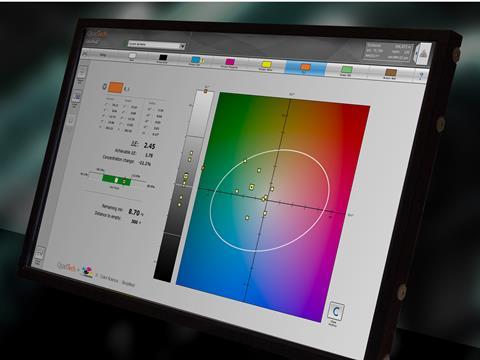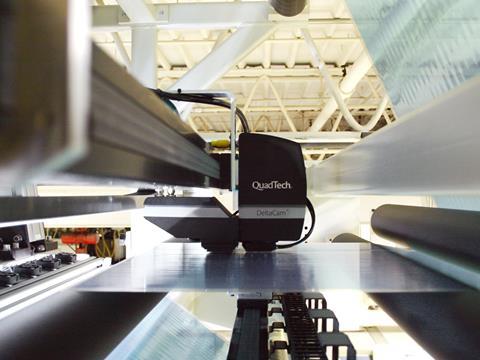
Increasingly, brand owners are using multiple print processes, substrates, packaging solutions, and print production locations - and expect absolute fidelity to brand colours across all platforms. Yet the demand for colour perfection is not limited to brand colours alone. Very slight colour shifts or inconsistencies in product imagery have a significant impact on consumers’ perception of the product - according to Craig Du Mez, QuadTech brand manager.
Colour variations can lead consumers to believe that a package’s contents are compromised, the product is expired, or the product is counterfeit. It is now essential that print production grows beyond colour management as an art form practised by a few experts, to a more exact science managed by every single part of a print operation.
A great deal of research has been done on the importance of colour in influencing buyer behaviour. Jill Morton of Colorcom gathered some interesting study results in a piece entitled Why Color Matters. According to a study conducted by Loyola University Maryland, “colour increases brand recognition by over 80%.” University of Winnipeg’s Satyendra Singh, in Impact of Color on Marketing, shows that colour has a significant impact on sales since “people make a subconscious judgement about a product within 90 seconds of initial viewing, and between 62% and 90% of that assessment is based on colour alone.” Research by the Henley Centre suggests 73% of purchasing decisions are now made in-store. Consequently, catching the shopper’s eye and conveying information effectively are critical to successful sales. Brand owners are certainly aware of these facts, and this is driving their high interest in precise, consistent colour management.
For printers and converters, it is becoming increasingly complicated to meet these quality and consistency challenges. In addition to rising brand owner demands, printers are faced with an increased pace and complexity of required technological innovation—at a time when profit margins are very tight. Add to that increasing requirements to meet new industry standards, an ageing workforce, and the scarcity of true colour experts… and the challenges can be extremely daunting.

For that reason, QuadTech, Inc. has introduced and continues to develop new colour management tools that directly address these challenges. Among the innovations are complete workflow solutions that are software-based (requiring no investment in hardware or press modifications), automation that greatly simplifies the science of colour production (reducing reliance on a handful of colour experts who can’t be on every press for every shift at every plant), and inline colour measurement technology that is affordable and adaptable for even small printing and converting operations.
There is a clear and growing trend to move from periodic colour measurement with handheld spectrophotometers, to the more thorough and consistent inline spectral measurement. There is certainly a place for sampled handheld measurement. But continuous inline measurement catches problems through the entire print run, preventing you from throwing out product that is within colour tolerances, and ensuring that no out-of-tolerance product is passed on to your customers.
The new DeltaCam™, launched at last year’s drupa, makes advanced inline spectral measurement affordable to individual packaging print houses. For about half the cost of other inline systems, package printers can utilise accurate, automated L*a*b* measurement on film, paper or board—ensuring that all printed product is within their customers’ colour specifications. The M1, M0, ISO compliant technology enables printers to reduce time and waste while confidently maintaining colour throughout the roll—without the need to wait for a roll change to measure with a handheld device.
QuadTech’s ColorTrack™, a unique new colour management software for flexo and gravure packaging applications, is an industry first highly adaptive “colour expert in a box” solution that automates the process of delivering absolute consistency from press-to-press, shift-to-shift, and plant-to-plant. With a variety of options for hand-held and inline configurations, the software facilitates fast, accurate press-side correction of ink formulations.
Without any hardware modifications to the press, ColorTrack software seamlessly integrates with ink recipe software to not only simplify workflow, but also dramatically reduce the number of ink corrections needed to achieve accurate, optimal colour. With human colour experts, three to five colour corrections on start-up are typical for a new job—or even six to eight for difficult colours. ColorTrack can achieve more accurate colour in just one or two corrections.
Traditionally, colour measurement data had to be sent to the ink kitchen to correct the ink recipe, but this can now be done press-side, using software and “virtual scales” that can accurately determine the amount of ink remaining in each ink unit. Printers can therefore track their ink quantities so that they know exactly the right quantity needed to bring the colour back within tolerances, and can make the correction on the fly.

With QuadTech’s InkWeigh™, press operators can view and weigh ink recipes received from the formulation software to easily make press-side corrections. Hugely significant savings in time and ink can be realised in this way, which can in turn be passed on to clients. In addition, InkWeigh enables printers to create in-tolerance colours by making adjustments to other inks in their inventory—rather than starting from scratch—dramatically reducing ink inventory and storage needs.
The ColorTrack software, InkWeigh, and DeltaCam inline colour measurement technology were first introduced at drupa 2016. Since then, new features have been developed to deliver what QuadTech refers to as “seven colour management breakthroughs”—because these capabilities are new to the packaging and converting industry:
1. Pre-Laminate/Post-Laminate Colour Support. Users can define both pre- and post-laminate colour targets within the job, measure colour inline, and use both targets to manage the difference on-press. This first and only automated workflow solution replaces cumbersome “trial and error” methods of achieving post-laminate colour that is within your customers’ specifications.
2. ColorTrack Press-Side Recipe Correction Module. For the first time, it is possible to track ink quality and manage corrections when needed at the printing press—with one product. The new ColorTrack Correction Module streamlines the correction process, allowing for fast, accurate colour correction at the press to dramatically reduce waste caused by colour problems.
3. Ink Strength/Anilox Colour Correction. Press operators can manage ink colour at the press without correcting ink. They can avoid the cost and time involved with recipe corrections by instead managing print conditions. ColorTrack makes it possible to accurately predict the impact an ink concentration change or anilox change will have on colour. Advanced “Perifarbe” math formulas tell you if and how the best-match can be achieved.
4. Spot Colour Tone Value Calculation to ISO 20654. Designed specifically with Packaging print in mind, the Spot Colour Tone Value Calculation allows you to conform to the new ISO 20654 standard by showing how well your Spot Colour mid-tones match your targets.
5. Enhanced Colour Measurement through Strip Scanning. Gather a full set of colour targets for solids, tones, and substrate in one sweep with a hand-held spectro. Users can measure and average multiple colour strips.
6. Simplified Ink Quantity Tracking via Patented “Virtual Scales.” Actively track ink consumption without the use of costly scales on each ink unit. Because it is software-based, this precise tracking solution can be retrofit to any flexo or gravure press, allowing you to standardize on a single color management solution across any range of press types and models.
7. Complete, Simplified Workflow. Increase press productivity 25% or more. Reduce color makeready and setup time up to 75%. Print houses can keep records of which ink batches are used, and dramatically reduce ink inventory and storage needs.
Over-used terms like “innovation” often conjure images of a new feature-laden smartphone, or some other type of gadget that doesn’t exist today. Besides hardware and software innovations, the packaging and converting market is crying out for more effective processes that ensure colour precision—and connect workflows between presses, work shifts, and even different facilities. Those solutions will be technology-driven.
Here’s why this is so critical to future success: More than 25% of brand owners indicate that they frequently encounter colour inconsistency or inaccuracy, according to Sara Tornetta in Color Sells. Patrice Aurenty, business leader for colour management at Sun Chemical, says that brand owners experience anywhere from 40% to 70% rework costs added to each new product launch due to colour issues.
There is an enormous opportunity for printers and converters who can adopt complete, simplified workflow solutions that increase press productivity, significantly reduce colour makeready and setup time, and reduce ink inventory and storage needs. Strong inter-instrument agreement and a complete, connected workflow also allow printers to prove their colour quality to their customers. This will have a huge impact on profitability by decreasing liability exposure and rebates.
Printers who fail to make this a priority will have difficulty surviving against competitors who do. Workflow innovations may not seem as splashy as the latest feature-laden smartphone, but there is some serious money to be made for printers who solve brand owners’ very costly colour quality and consistency issues.
















